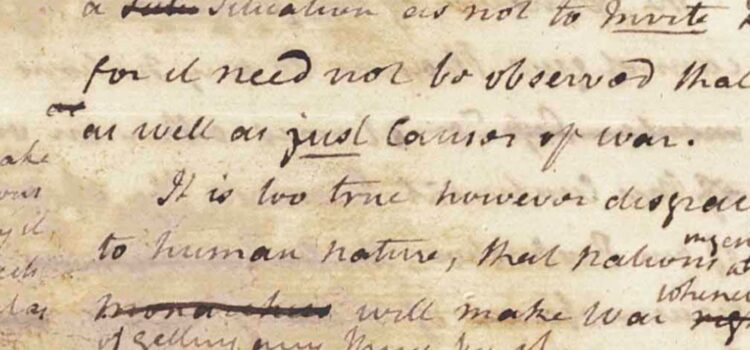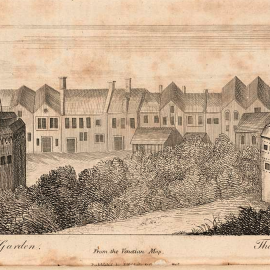

This article is an excerpt from the Shortform summary of "The Federalist Papers" by Alexander Hamilton. Shortform has the world's best summaries of books you should be reading.
Like this article? Sign up for a free trial here .
How many Federalist Papers are there? What do the papers discuss, and why are they important?
The Federalist Papers are made up of 85 essays. The essays discuss the need for the Union, the new Constitution, and how it compares to the Articles of Confederation.
If you’re wondering “how many Federalist Papers are there?” then keep reading!
How Many Federalist Papers Are There?
The Federalist Papers are a unique window into the minds of the men who drafted the Constitution and founded the United States. How many Federalist Papers are there in the collection of essays? This series of 85 essays, originally published at the time of the raging debate over ratification, make the case for a stronger national government and urge the adoption of the Constitution. This is one of the most important documents in American history, revealing what the Founding Fathers thought about human nature, civil society, and the relationship between government and liberty.
How Many Federalist Papers Are There on the Need for the Union?
The adoption of the proposed Constitution was necessary for the preservation of the Union and the safeguarding of the liberties won during the Revolutionary War. Indeed, the successful ratification of the Constitution was a great moral and philosophical test for the young nation. Crucial questions hung in the balance. Were human beings capable of designing a government that properly protected liberties and promoted national welfare? Or were they destined to devolve into despotism and disunion?
The Failures of the Articles of Confederation
In the last chapter, we made the case for the preservation of the Union, illustrating why it was crucial for the security, liberty, and prosperity of the American people.
In this chapter, we will analyze why maintaining the Articles of Confederation was totally at odds with the goal of preserving that Union. To do this, we will need to explore the specific weaknesses of the Articles and why Publius believed it was necessary to scrap them entirely and replace them with the new United States Constitution.
Powers of the New Government
How many Federalist Papers are there that discuss powers of the new government? Having established the failures of the old system of government, we’ll use this chapter to outline the principles of the new Constitution that had been drafted at Philadelphia in 1787. In particular, we’ll analyze the specific purposes the new government was designed to achieve with regard to the core functions of national administration:
- National defense
- Taxation
- Regulating foreign commerce and making treaties
- Overseeing interstate commerce
General Principles of the New Constitution
Given the obvious failures of the Articles of Confederation, there was a clear need for reform. But no mere revision would suit the needs of the moment. For, as we’ve seen, the defects of the Articles had afflicted all confederate governments going back to the days of ancient Greece. They were beyond salvation because the entire system of government they created was inherently unworkable; they needed to be discarded and replaced wholesale.
How Many Federalist Papers Are There on the Structure of the New Constitution?
So far, we’ve outlined general principles of the new Constitution and made the case for why it was such an improvement over the ineffective Articles of Confederation. We’ve also discussed the sharing of powers between the federal government and the states.
Now, we’re going to pivot our analysis to the structure of the federal government itself. In this chapter, we’ll explore:
- How the Constitution separates power within the federal government between the executive, legislative, and judicial branches;
- How the system of checks and balances was designed to keep any of the branches from growing too powerful at the expense of the other branches; and
- The specific powers and functions of each of the branches and their constituent parts, examining how they’re elected and what their responsibilities are.
In this chapter, we’ll continue our analysis of the structure of the new federal government. In particular, we’ll outline the main functions and responsibilities of the presidency and examine the role of the federal judiciary in the new constitutional system. We’ll also look at the important issue of why the original draft of the Constitution contained no bill of rights—and what its supporters and detractors thought about this omission.
Essays Written by Each Author
The essays that comprise The Federalist Papers were published under the collective pseudonym of “Publius.” Most readers at the time of publication did not know who the authors were or who wrote which of the essays.
How many Federalist Papers are there that were written by each author? While historians are still not completely certain about the authorship of each essay (and it has long been a subject of dispute in the academic community), there is a general scholarly consensus for the following attribution:
- Alexander Hamilton (51 essays: 1, 6–9, 11–13, 15–17, 21–36, 59–61, and 65–85)
- James Madison (29 essays: 10, 14, 18–20, 37–58 and 62–63)
- John Jay (5 essays: 2–5 and 64)

———End of Preview———
Like what you just read? Read the rest of the world's best summary of Alexander Hamilton's "The Federalist Papers" at Shortform .
Here's what you'll find in our full The Federalist Papers summary :
- The genius of the founding fathers in how they designed the United States Constitution
- Why it was critical for the United States to form a union rather than stay separated as colonies
- How Alexander Hamilton anticipated social issues that are still relevant today






